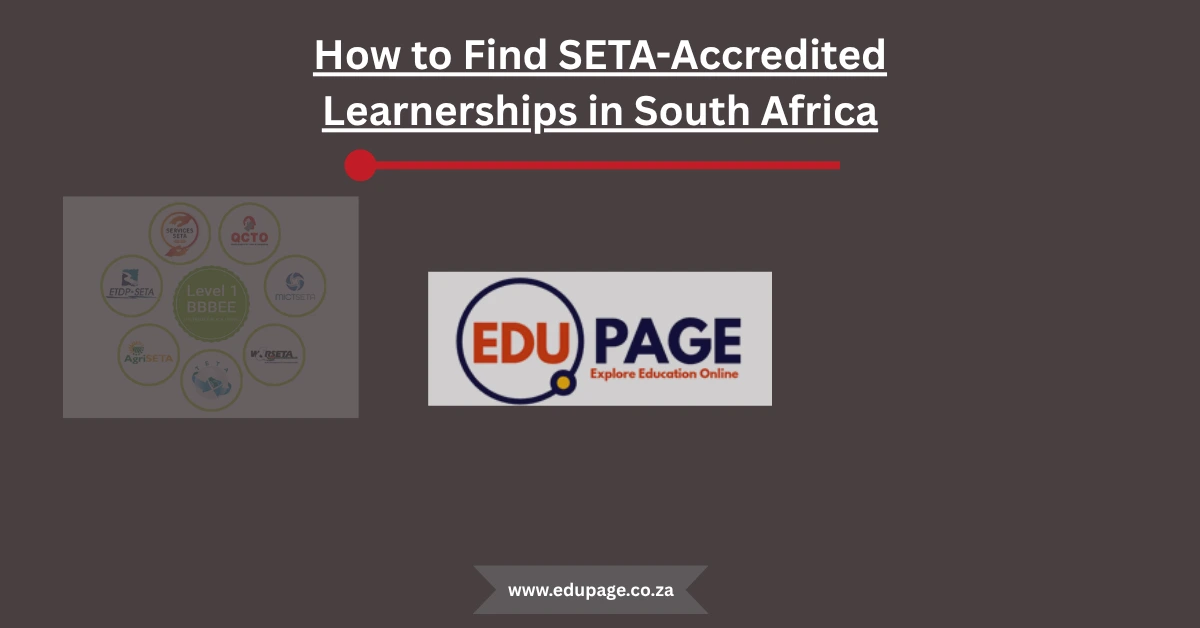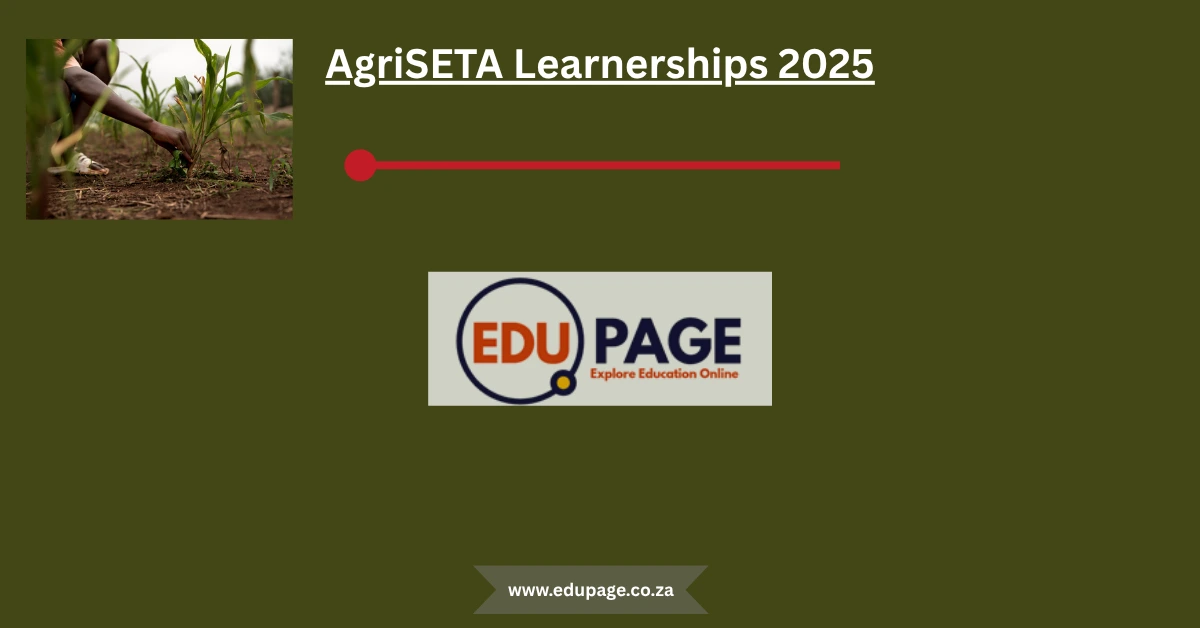The Real Cost of Learning: How Much Support Do SETA Learners Get Monthly?
The Value of Earning While Learning
In the world of South African skills development, SETA learnerships have become a vital bridge between education and employment. These structured training programs offer more than just certificates—they offer hope, practical skills, and, most importantly for many, a monthly stipend to support learners on their journey. But just how much can a learner expect to receive? The answer is layered, and it depends on the type of SETA, the industry involved, and the program itself.
Let’s explore this further, in a way that makes sense for everyday South Africans—whether you’re an unemployed youth, a parent helping a child make decisions, or simply someone looking to re-skill.
🌟 What Is a SETA Stipend, and Why Does It Matter?
Before we dive into numbers, it’s important to understand what a stipend actually is. A SETA stipend is not a salary—it’s a financial grant given to learners to cover basic living expenses while they are part of a learnership or internship programme. This financial support helps participants afford transport, meals, and essential costs during training.
Why is this important? Because many people from disadvantaged communities simply cannot afford to work for free. The stipend, modest as it may be, makes participation in education possible for thousands who would otherwise be left behind.
💰 The General Range: What Most Learners Receive
Across the board, SETA learnership stipends in South Africa typically fall within the R2,500 to R8,000 per month range. This variation depends on factors like the nature of the work, the host employer, and the SETA governing the programme.
- Lower end (R2,500 – R3,500): Often associated with entry-level or NQF Level 2–3 programmes, particularly in fields with large intakes such as call centres or retail.
- Middle range (R4,500 – R6,000): This is where most mid-level technical learnerships and internships fall. Many learners in admin, HR, IT support, and hospitality receive stipends within this band.
- Upper end (R6,000 – R8,000): Usually found in high-skill fields such as engineering, finance, and advanced IT learnerships, especially in metropolitan areas.
🖥️ Case Study: MICT SETA
MICT SETA (Media, Information, and Communication Technologies) supports careers in tech-related fields—think software development, digital media, and networking.
- Typical stipend: Around R2,500 per month
- Example programmes: IT Support Learnerships, Digital Marketing, Systems Development
- Why the lower amount? Many MICT SETA programmes are entry-level and focus on theoretical learning with short practical components. While valuable, the cost to host learners is relatively low.
Still, for a learner living with parents or in a shared space, this amount covers basic transport and food, making it manageable to complete the 12-month course.
🧼 Case Study: Services SETA
The Services SETA covers industries like hairdressing, cleaning, funeral services, and hospitality. This SETA has one of the widest ranges of programmes and stipend levels.
- Typical stipend range: R4,500 to R4,800 per month
- Example programmes: Business Administration, Early Childhood Development, Hygiene & Cleaning
- Why mid-range? These programmes often include both theory and practical components, requiring learners to be on-site, sometimes working shifts.
In urban centres like Johannesburg or Cape Town, a R4,800 stipend may still be stretched thin, but it often allows learners to commute daily, buy food, and contribute modestly to household needs.
🍲 FoodBev SETA: Learning While Feeding the Nation
The Food and Beverages Manufacturing SETA plays a major role in the food processing and packaging sectors. Internships and learnerships in this space are hands-on, often factory-based.
- Typical stipend: Around R5,000 per month
- Example programmes: Food Processing, Packaging Technician, Quality Assurance
- Why the amount? These are practical-heavy roles that require daily attendance and sometimes long hours. A slightly higher stipend helps learners manage meal costs and safety gear.
Many learners in FoodBev programmes also receive meals during shifts or uniform allowances, depending on the employer.
🧾 Progression’s Clients: Real-World Data from Industry
Progression is a South African skills development firm that works closely with various SETAs. According to their insights:
- Average stipend paid: R4,500 to R5,500 per month
- These figures reflect what employers are currently offering across a range of sectors and regions.
What this tells us is that, in practical terms, most learners receive somewhere between R4,500 and R5,500, making this the national “norm” for well-structured, mid-level learnerships.
🎓 What Influences the Stipend Amount?
Several key factors determine what a learner will earn each month:
- The SETA involved: Each SETA has different funding models and guidelines.
- The employer: Host companies top up stipends based on internal budgets or HR policies.
- The NQF level: Higher NQF levels (e.g., Level 5 or above) often come with higher stipends.
- Location: Urban centres tend to offer higher stipends due to transport and cost of living.
- Programme length and structure: Full-time, hands-on learnerships often pay more than part-time or remote courses.
🧑💼 Is a Stipend Enough to Live On?
The honest answer is—it depends. For many South African learners, the stipend is not a full income, but it makes a huge difference. It offers dignity, independence, and the chance to complete training without begging for bus fare.
Learners often supplement their stipend by:
- Sharing transport
- Staying at home during the programme
- Taking on small side gigs (like tutoring, online tasks)
- Saving on student accommodation
And while it might not be enough to rent your own place or support a family, a R5,000 monthly stipend is enough to get through a learnership period with focus and discipline.
📚 Beyond the Money: Long-Term Value
Let’s be clear—while stipends are helpful, the true value of SETA programmes is the qualification and experience they provide. After a successful 12-month learnership, many learners:
- Get absorbed into full-time jobs
- Use their certificate to apply for better positions
- Go on to complete further education at FET colleges or universities
- Start their own businesses in their trade
In this light, the stipend becomes a stepping stone, not the destination. What starts as R4,500/month could become a R15,000/month career within a few years.
✅ Tips for Prospective Learners
If you’re considering applying for a SETA learnership, keep the following in mind:
- Don’t be discouraged by low stipend figures. It’s a start, not the end.
- Ask questions during the interview—about stipends, transport, and working hours.
- Be aware of scams. No real SETA programme will ask you to pay to apply.
- Use your time wisely. Learn soft skills, build a CV, and make professional connections.
- Apply to multiple programmes. CAST your net wide to increase your chances.
Final Thoughts: Education With a Paycheck
In a country where unemployment, especially among youth, remains a pressing issue, SETA stipends provide not just support—but hope. These learnerships say, “You don’t have to choose between learning and survival.”
They allow young South Africans to grow their skills, gain work experience, and make a small income—all at the same time. And that, in today’s world, is nothing short of revolutionary.
So whether you’re earning R2,500 in a digital course or R6,000 in a hands-on food production internship, remember this: you are being paid to build your future.




